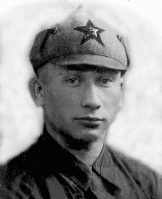
Iosif Kirzhner
Born: January 7, 1916
Odessa, Ukraine
Iosif was the second of four boys born to a Jewish family in the southern Ukrainian port of Odessa, a city with the largest Jewish community in the Soviet Union before World War II. Iosif's father worked as a hat maker, while his mother raised the family.
1933-39: In 1936 Iosif joined the Red Army and was trained to drive a tank. After Germany invaded Poland on September 1, 1939, the Soviet Union took advantage of its nonaggression pact with the Germans to claim Finnish territory. The Finns resisted them and war broke out in November. Iosif fought on the Finnish front as part of a tank detachment. Though greatly outnumbered, the Finns battled tenaciously and the war raged into the new year.
1940-44: They defeated the Finns in March 1940. Just over a year later, Germany invaded the Soviet Union. In the summer of 1942, while attempting to slow a German offensive in the Rostov area, Iosif's tank detachment was captured in the town of Panitsky. The Germans held them in several camps before deporting them to Auschwitz. Iosif tried to escape, along with several friends, but they were caught. As punishment, the barracks leader beat the soles of their bare feet until they bled, and then forced them to work barefoot.
Liberated by the Red Army in 1945, Iosif was questioned by the Soviets to determine if he was a "traitor." He was allowed to return to Odessa. In 1978 he immigrated to America.